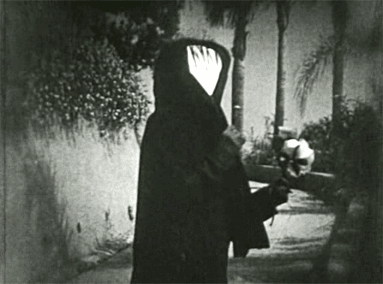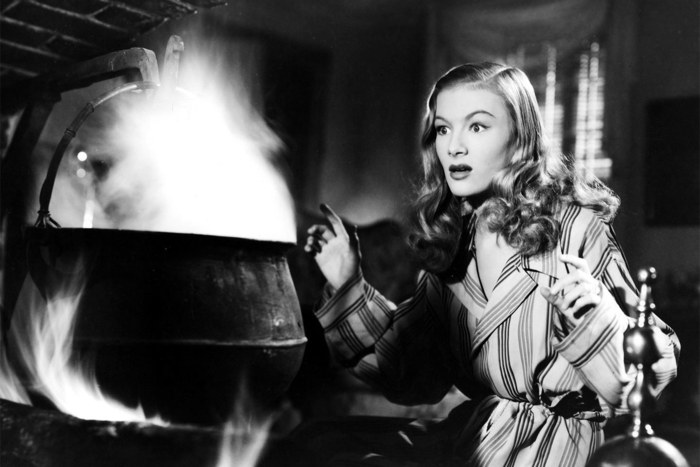The third recap in my resolution to watch 50 movies made before 1950 in 2018 [see Part I| Part II]. I remain a bit behind pace, but there’s plenty of time to make up for that. My current pace seems to be about one per week. With the occasional extra and a couple of themed weeks during this year’s 6 Weeks of Halloween, I should be able to complete the challenge (and probably more). This time around, I cheated a little and watched some classic short films, so if I only get to 50 by the end of the year, put an asterisk on it or something. Anyway, let’s get to it:
- The Adventures of Robin Hood (1938) – The birth of swashbuckling?
MARION: You speak treason!
ROBIN HOOD: Fluently
Yes, lots of swashbuckling. We all know the general story, and this seems like a pretty standard depiction (as you’d expect from a movie of this period). Some decent setpieces here, and Errol Flynn has a charisma that carries the film. Surprisingly violent, lots of outright murder, which is almost amusing these days. Good transfer, vibrant colors (partly due to costuming, I’m sure), really clean visuals (watched on Blu Ray). Holds up reasonably well, and is clearly influential (beyond the general Robin Hood influence, which obviously goes much further back). ***
- I Married a Witch (1942) – A witch and her trickster father are burned at the stake, their souls becoming trapped in a tree. Before she dies, the witch curses the family that burned her at the stake. Fast forward to present day, a descendant is running for governor when the witch and her father are freed from their confines. They quickly set about torturing the poor guy… by making him fall in love with the witch, played by Veronica Lake? Not very torturous, if you ask me.
Last seen in Sullivan’s Travels, Lake is a bottomless ocean of charisma, making this premise (that the guy initially rejects her affections) a little goofy, but then, that’s the tone of the movie, and it’s a whole ton of fun. Some of the gags work well, dialog has some zingers (“Ever hear of the decline and fall of the Roman Empire? That was our crowd.”), and the special effects, while tame by modern standards, were still pretty neat. This is one of the lighter entries available in the Criterion Collection, making it a sorta refreshing change of pace, well worth seeking out for Romantic Comedy fans. (I need more Veronica Lake in this series, but I’ve already plowed through most of the readily available stuff, so I’ll need to find a way to track down more…) ***
- The Lady Eve (1941) – Harry, an awkward heir to a brewery fortune is instead fascinated with snakes. While transporting a rare snake to the mainland on a cruise ship, he’s targeted by a trio of card sharps. Only problem is that one of the sharpies falls in love with him (and he with her). Shenanigans ensue. One thing I love is that when Harry finds out that his love is a con woman, he pretty much immediately confronts her. Too many stories draw this out, have people hide what they know, refuse to communicate, etc… Here it sets off a quick change in tone, but obviously everything works out in the end. Starring a young Henry Fonda, who makes for a decent befuddled mark, and Barbara Stanwyck, a sharp presence for sure. Also of note, the “Gargantuan-bellied, frog-voiced character actor” Eugene Palette, always fun (he was Friar Tuck in Robin Hood). ***
- Un Chien Andalou (1929) – Salvador Dali collaborated with a young Luis Buñuel (this short is his first credit) on this avant-garde surrealist film. As you might imagine, there’s not really a plot as such, more just a series of dreamlike vignettes featuring a lot of imagery that is clearly influential in the horror genre. It covers everything from gory eyeball gags (the film’s eye-opening introduction features a graphic depiction of a man slicing through an eyeball cross-cut to thin clouds passing across the moon; Fulci must have loved this), to body horror (ants emerge from a hole in a man’s palm; a man’s mouth closes up to reveal only skin where his mouth should be; Cronenberg must have loved this), to the Death’s Head moth (Buffalo Bill probably liked this), and more. Definitely worth a watch for horror historians or fans of surrealism.
- A Funny Shave (1906) – Yes, I suppose I’m cheating by including shorts in this series, especially this one, which is only 2 minutes long (give or take). A man lathers up for a shave and takes a taste of his shaving cream, then hallucinates, seeing several creepy looking, clown-like caricatures in the mirror. Director Segundo de Chomón is known for pushing the boundaries of trick photography. Not really mindblowing in a modern viewing, but in 1906, I’m guessing it was pretty impressive.
- Meshes of the Afternoon (1943) – Another short film, I’m really spiraling here. Still, this is a really interesting one. Exceptional use of shadows. Jump cuts, slow motion, superimposition. It’s ominous, moody, and elliptical. The black cloaked figure with a mirror for a face is a striking image, and one I’m surprised we haven’t seen more of in modern films.

Again not much of a plot here, it feels more like an experiment exploring female desires and a dark love. Or something like that. Co-directed by Maya Deren, who has a reputation as one of the more influential avante-garde directors of the 40s and 50s, she unfortunately doesn’t have any real feature length films available. Not sure if this was by choice or perhaps more likely, constraints of the Hollywood system. Again, an interesting flick, especially for horror historians.
That covers it for now. Stay tuned for some moar.
